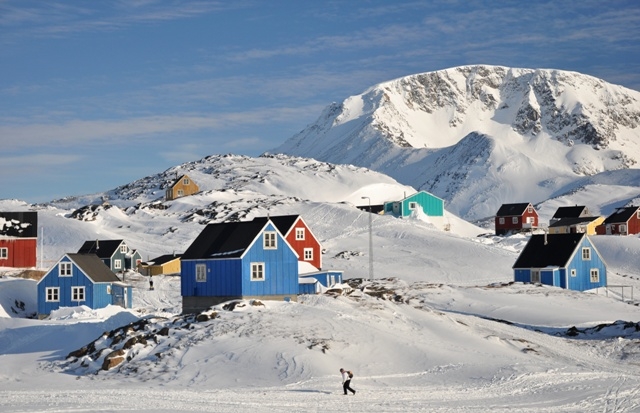Greenland, a self-governing territory within the Kingdom of Denmark and one of the Overseas Countries and Territories (OCTs) associated with the EU, is seeking new sources of revenue to develop a more self-sustaining economy. It faces major challenges given its remote location, heavy economic dependence on the fishing industry, weak infrastructure, high unemployment, alarming drop-out rates in education, and a long-standing reliance on Denmark for roughly two-thirds of its budget revenue. New opportunities have arisen thanks to Greenland’s rich resources of critical raw materials which are becoming increasingly more accessible due to climate change.
Major changes in Greenland’s raw materials policy

Aleqa Hammond, Greenland’s first female Prime Minister and leader of the social-democratic Siumut party, won the March 2013 general elections with 43% of the vote, ousting the ruling socialist Inuit Ataqatigiit party of former Prime Minister Kuupik Kleist. Her coalition government has decided inter alia to charge mining firms royalties, develop Greenland’s own workforce and limit migrant labour, and revise the Large Scale Projects Act (storskalalov) which allows foreign (Chinese) workers to be paid less than the local minimum wage during the construction of large scale projects. The government supported the controversial move to overturn a 25-year “zero-tolerance policy” on uranium mining. In October 2013, Greenland’s parliament lifted the uranium ban by a narrow margin of 15-14 votes. While raising security and defence issues with Denmark and posing serious environmental risks, this may pave the way for the exploitation of minerals mixed with uranium, such as rare earth elements (REEs) at the Kvanefjeld site. This is one of the largest deposits of REEs in the world, estimated to have the potential to increase Greenland’s GDP by 20% per year.
Greenland’s education policy, 2006-20
The Greenland Education Programme (GEP) is divided into two phases and pursues a long-term strategy of upgrading the skills of the local workforce. The first phase (2006-12) focused on lower secondary school leavers and unemployed people under the age of 50. Although both the number of graduates and attendance has recently increased, drop-out rates in the post-primary education and vocational training sectors have remained high. The second phase (2013-20) will concentrate on higher education.
EU-Greenland relations
Complementing the EU-Greenland Fisheries Partnership Agreement (FPA), Council Decision 2006/526/EC set out the framework for the EU-Greenland partnership for 2007-13, seeking mainly to address Greenland’s structural weaknesses. A replacement for this Decision, for the 2014-20 period, has now to be voted by plenary. The Commission’s programming document on sustainable development (PDSD) identified education and vocational training as a focus for action. In June 2012, in the framework of its “raw materials diplomacy“, the Commission signed a letter of intent with Greenland on cooperation in the raw materials sector. This coincided with similar initiatives by China and South Korea resulting in discussions on concrete projects, whereas the Commission is said to have failed so far to follow up. In December 2013, the Commission ordered a study on EU needs for cooperation with Greenland.
European Parliament position
The Committee on Development (rapporteur Ricardo Cortés Lastra, S&D, Spain) unanimously adopted a report on 21 January 2014 on the revised proposal for a Council Decision on an enhanced EU-Greenland partnership for 2014-20. This stressed the need to direct EU financial aid towards human and social development programmes such as the GEP.








Be the first to write a comment.